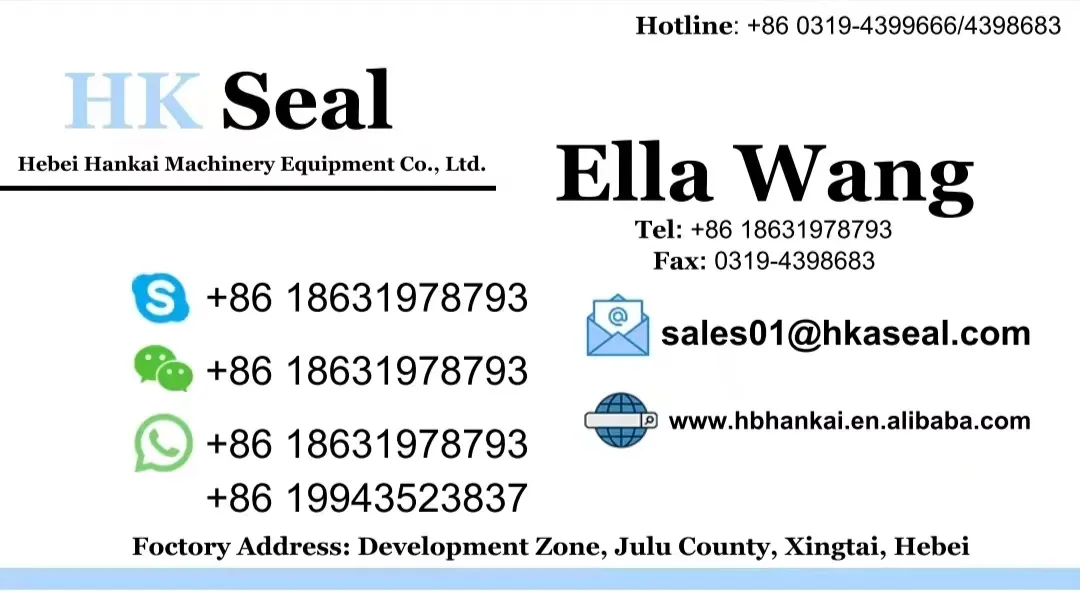ನವೆಂ . 12, 2024 04:26 Back to list
hydraulic ram seals
Understanding Hydraulic Ram Seals Essential Components for Efficient Operation
Hydraulic ram seals are critical components in hydraulic systems, functioning to contain hydraulic fluid and maintain system pressure while preventing leaks. These seals are vital in applications ranging from construction machinery to automotive systems, ensuring that equipment operates smoothly and efficiently. A detailed understanding of hydraulic ram seals can enhance maintenance practices and improve the longevity of hydraulic systems.
The Importance of Hydraulic Seals
At the core of any hydraulic system is the necessity for a reliable seal that can withstand high pressures and varying temperatures. Hydraulic ram seals are specifically designed to provide a tight fit between moving and static parts in hydraulic cylinders. They prevent fluid leakage, which can lead to reduced efficiency, increased operational costs, and potential equipment failure.
Types of Hydraulic Ram Seals
Hydraulic ram seals come in various types, each suited for specific applications and conditions
. The most common types include1. O-rings These are circular seals made from elastomeric materials and are widely used due to their versatility and ease of installation. They provide reliable sealing in low-pressure applications. 2. U-cups These are designed to create a dynamic seal that can hold back pressure while allowing for the movement of the piston. U-cups are often used in single-acting cylinders.
3. Rod seals Specifically meant for the sealing of the piston rod in hydraulic cylinders, rod seals prevent leakage while allowing the rod to extend and retract.
4. Piston seals These seals are found at the piston interface within the cylinder and are responsible for maintaining pressure in double-acting cylinders. They provide robust sealing against high pressures.
5. Backup rings Often used in conjunction with O-rings and other seals to prevent extrusion under high pressure, backup rings enhance the performance and longevity of seals.
hydraulic ram seals

Material Selection
The selection of appropriate materials for hydraulic ram seals is crucial for their performance. Common materials include
- Nitrile Rubber (NBR) Highly resistant to petroleum-based fluids and known for its elasticity, NBR is widely used in hydraulic seals. - Polyurethane (PU) This material offers excellent abrasion resistance and is suitable for high-pressure applications.
- Fluoroelastomer (FKM) Known for their resistance to high temperatures and aggressive fluids, FKMs are ideal for harsh environments.
- PTFE (Polytetrafluoroethylene) This material is non-stick and provides excellent chemical resistance, making it suitable for various hydraulic applications.
Maintenance and Troubleshooting
Regular maintenance of hydraulic ram seals is crucial for optimal system performance. Signs of seal failure may include visible leaks, decreased system efficiency, or unusual noises during operation. Regular inspections can identify wear and tear, allowing for timely replacement of seals before major issues develop. When replacing seals, it is essential to follow manufacturer specifications regarding size, material, and installation procedures to ensure proper operation.
Conclusion
Hydraulic ram seals play a vital role in the functionality and reliability of hydraulic systems. By understanding the types of seals, materials used, and the importance of regular maintenance, operators can ensure their hydraulic systems operate efficiently and with minimal downtime. As industries continue to evolve, advancements in seal technology will further enhance the capabilities and performance of hydraulic systems, ultimately leading to greater productivity and cost savings in various applications.
-
Unlocking the Potential of Hydraulic Systems with Essential Sealing Solutions
NewsAug.06,2025
-
Unleash the Power of Your Hydraulic Systems with Our Premium Seal Kits
NewsAug.06,2025
-
Specialized Hydraulic Seal Kits for Breakers, Pistons, and Presses
NewsAug.06,2025
-
Revitalize Hydraulic Systems with Premium Repair and Seal Kits
NewsAug.06,2025
-
Fortify Your Cylinders with Premium Sealing Solutions
NewsAug.06,2025
-
Elevate Hydraulic System Reliability with Specialized Seal Kits
NewsAug.06,2025
-
TCN Oil Seal Metal Ring Reinforcement for Heavy Machinery
NewsJul.25,2025
Products categories
















